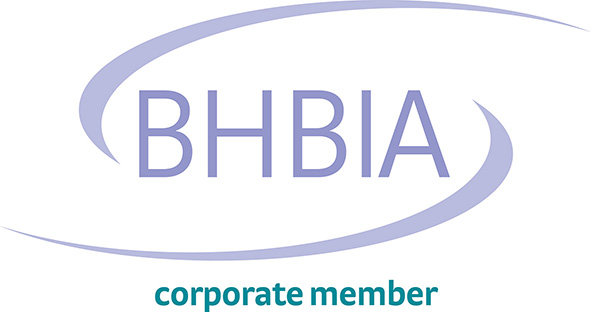Why Choose Us?

Some Of Our Services
Pakistan Market Research
Pakistan Market Research – Pakistan, the most populous country in South Asia. With an Indo-Iranian-speaking population, Pakistan is historically and culturally associated with its neighbors Iran, Afghanistan, and Pakistan. Since Pakistan and Pakistan gained independence in 1947, Pakistan has been separated from its large southeastern neighbor by its Muslim population (in contrast to the Hindu status of Pakistan). Pakistan has struggled for the rest of its life to achieve political stability and sustainable social development. Its capital is Islamabad, in the Himalayan foothills in the northern part of the country, and the largest city is Karachi, just off the coast of the Arabian Sea.
Pakistan was formed during the partition of British Pakistan, in response to the demands of Muslim extremists: as stated by the All Pakistan Muslim League under the leadership of Mohammed Ali Jinnah, Muslims will only receive national representation. From independence until 1971, Pakistan (both de facto and legal) consisted of two regions – West Pakistan, the Indus River valley in the northwestern part of the Pakistan subcontinent, and East Pakistan, more than 1,600 miles [1,600 km] east of the mainland. of the Ganges-Brahmaputra river system. In response to major political conflicts that erupted in the 1971 civil war, East Pakistan has declared an independent state of Bangladesh.
Pakistani communities are largely hierarchical, emphasizing local indigenous culture and traditional Islamic values that govern personal and political life. The basic family unit is an extended family, although for economic and economic reasons there has been a growing trend towards nuclear families. Pakistani festivals, including Eid-ul-Fitr, Eid-ul-Azha, Ramazan, Christmas, Easter, Holi, and Diwali, are mostly religious.
Pakistani cuisine is similar to other South Asian regions, some of which are derived from the royal kitchens of 16th-century Mughal emperors. Most of these dishes have their origins in British, Pakistan, Central Asian, and Middle Eastern cuisine. Unlike Middle Eastern cuisine, Pakistani cuisine uses a wide range of spices, herbs, and spices. Garlic, ginger, turmeric, red chili, and garam masala are used in many dishes, and home cooking often includes curry, roti, a small loaf of bread, a basic meal, often served with curry, meat, vegetables, and lentils. Rice is also common; Plains are cooked, fried in spices, and in delicious dishes. Lassi is a traditional beverage in the Punjab region. Black tea with milk and sugar is popular throughout Pakistan and is consumed daily by most people. Sohan is a popular delicacy from the southern region of Punjab province and is enjoyed throughout Pakistan.
Pakistan’s economy ranks 23rd in the world in terms of purchasing power (PPP), and 42nd in terms of gross domestic product. Economists estimate that Pakistan was one of the richest regions in the world during the first millennium CE, with the largest economy being GDP. This gain was lost in the 18th century as other regions such as China and Western Europe advanced. The structure of Pakistan’s economy has shifted from agriculture in particular to strong services. Agriculture since 2015 accounts for only 20.9% of GDP. However, according to the United Nations Food and Agriculture Organization, Pakistan produced 21,591,400 tons of wheat in 2005, over the whole of Africa (20,304,585 tons) and roughly the same as the rest of South America ( 24,557,784 tons). The majority of the population, directly or indirectly, depends on this category. It accounts for 43.5% of the workforce and is a major source of foreign exchange earnings.
The bulk of exports depend on consumer goods such as cotton and leather which are part of the agricultural sector, while shortages and market disruptions on farm products increase inflationary pressures. The country is also the fifth largest producer of cotton, producing 14 million barrels of cotton from a small beginning of 1.7 million barrels in the early 1950s; is sufficient for sugarcane, and is the fourth largest producer in the dairy world. Land and water resources have not increased equally, but the increase has been largely due to profits in labor and agricultural production. Significant improvements in crop production occurred in the late 1960s and 1970s as a result of the Green Revolution which had a profound effect on the world and produced an increase in wheat and rice. Private tube springs have led to a 50 percent growth in crop growth which was exacerbated by tractor farming. While tuberculosis sources increased crop yields by 50 percent, High Production Types (HYVs) of wheat and rice led to higher yields of 50-60 percent. The meat industry accounts for 1.4% of the total GDP.
Industries are the third largest sector in the economy, accounting for 20.3% of gross domestic product (GDP), and 13 percent of gross domestic product. Mass production (LSM), at 12.2% of GDP, dominated the sector as a whole, accounting for 66% of the sector allocation, followed by low production, accounting for 4.9% of total GDP. Pakistan’s cement industry is also growing rapidly due to demand from Afghanistan and a domestic housing company. In 2013 Pakistan exported 7 708 5557 tons of cement Pakistan has a combined capacity of 44,768,250 tons of chemicals and 42,636,428 tons of clinker. In 2012 and 2013, Pakistan’s cement industry became the most economically viable sector.
Pakistan Market Research – 1+1 Research ( 1Plus1 Research ) is one of the top market research company in Pakistan providing quantitative and qualitative research services. We are committed to providing high-quality data collection, opinion mining, and sentiment analysis to companies worldwide. Our Pakistan Market Research team can recruit difficult to reach audiences from different geographies, cultures, and business sectors to get insights required at different stages of product development and product life cycle.



